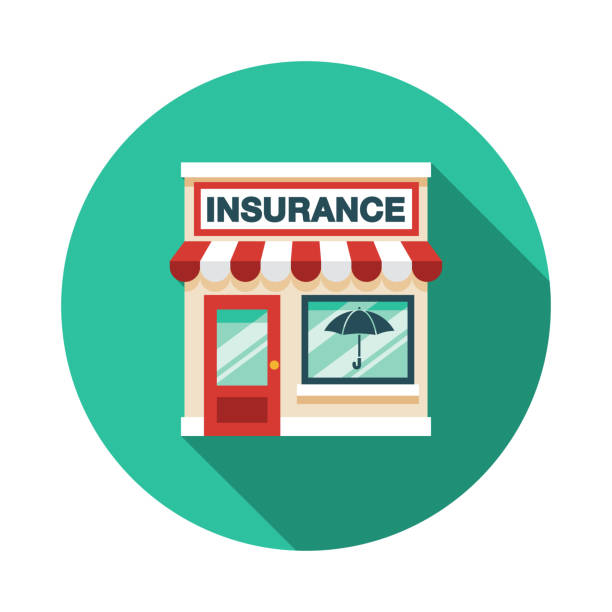On demand insurance is a type of insurance policy that provides coverage for a specific event or period of time, rather than for a longer-term commitment. This is in contrast to traditional insurance policies that require policyholders to commit to a specific term, such as six months or a year.
On demand insurance is becoming increasingly popular due to the convenience and flexibility it offers. On demand insurance policies can be purchased quickly and easily through digital platforms such as mobile apps, and policyholders can often customize the coverage to meet their specific needs.
Examples of on demand insurance include travel insurance for a single trip, event insurance for a wedding or concert, and car insurance for a short-term rental or ride-sharing service.
12+ Most Funny Insurance Ads Ever (WATCH)
How Does On demand insurance Work?

On demand insurance works by allowing policyholders to purchase coverage quickly and easily through digital platforms, such as mobile apps or websites. Policyholders can often customize the coverage to meet their specific needs, choosing from a range of options such as coverage limits, deductibles, and types of coverage.
Once the policy is purchased, the policyholder is covered for the specified period of time, which could be as short as a few hours or as long as a few weeks. The policyholder pays a premium for the coverage, which is typically higher than what they would pay for a longer-term policy, but lower than what they would pay for coverage over the same period of time through a traditional insurance policy.
Advantages and Disadvantages of On Demand Insurance
On demand insurance can be a good option for those who only need coverage for a short period of time and want more flexibility and control over their policies. But it has its own pros and cons.
Pros:
- On demand insurance allows you to purchase coverage only when you need it, providing greater flexibility than traditional insurance policies.
- Since you only pay for coverage when you need it, on-demand insurance can be more cost-effective than traditional policies.
- On demand insurance policies can often be customized to meet your specific needs, allowing you to choose the coverage limits, deductibles, and types of coverage that work best for you.
- On demand insurance policies can be purchased quickly and easily through digital platforms, such as mobile apps or websites, making it more convenient than traditional policies.
- On demand insurance policies are typically more transparent than traditional insurance policies, with fewer hidden fees or exclusions.
Cons:
- On demand insurance policies may have limited coverage options or exclusions, which may not provide adequate coverage for all situations.
- On demand insurance policies are designed for short-term coverage, the premiums can be higher than what you would pay for a longer-term policy.
- On demand insurance policies can have complex terms and conditions that may be difficult to understand, which can lead to confusion or disputes over coverage.
- On demand insurance policies may not be available in all areas or for all types of coverage.
- On demand insurance policies are often purchased through digital platforms, which means you may not have the opportunity to speak with an agent or receive personalized advice.
100+ Insurance Blog Topics and Ideas To Write In 2023
Types of On Demand Insurance

The main types of on demand insurance can be categorized into three broad categories:
- Property and Casualty Insurance: This type of insurance provides coverage for damage or loss of property and legal liability for any injuries or damages caused to others. The main types of on demand property and casualty insurance include:
- Home insurance: This provides coverage for homeowners and renters against damage or loss of their personal property and liability for injuries or damage caused to others on their property.
- Car insurance: This provides coverage for vehicles against damage or loss and liability for any injuries or damages caused to others.
- Equipment insurance: This provides coverage for equipment rentals, such as a camera or musical equipment, against damage or loss.
- Health and Life Insurance: This type of insurance provides coverage for medical expenses and life insurance coverage. The main types of on demand health and life insurance include:
- Travel insurance: This provides coverage for medical expenses, trip cancellation, and emergency assistance while traveling.
- Event insurance: This provides coverage for events, such as weddings or concerts, against cancellation or postponement due to unforeseen circumstances.
- Pet insurance: This provides coverage for veterinary expenses and other pet-related expenses.
- Liability Insurance: This type of insurance provides coverage for legal liability for any injuries or damages caused to others. The main types of on demand liability insurance include:
- Gig worker insurance: This provides liability coverage for independent contractors or gig workers.
- Cyber insurance: This provides coverage for losses related to cyber attacks, data breaches, and other cyber threats.
On Demand Insurance vs. Traditional Insurance
On demand insurance and traditional insurance policies have some significant differences. Here are some differences between them:
- Traditional insurance policies usually provide coverage for a set period, such as six months or a year, while on-demand insurance policies are designed to provide coverage for shorter periods, sometimes just a few hours or days.
- On demand insurance policies provide greater flexibility, allowing you to purchase coverage only when you need it. Traditional insurance policies require you to commit to coverage for a longer period and may be more difficult to modify or adjust.
- On demand insurance policies are generally more cost-effective than traditional policies, as you only pay for coverage when you need it. Traditional policies often require you to pay a fixed premium regardless of whether you use the coverage or not.
- On demand insurance policies can often be customized to meet your specific needs, allowing you to choose the coverage limits, deductibles, and types of coverage that work best for you. Traditional policies may offer fewer customization options.
- On demand insurance policies typically have a faster and more streamlined claims process, as they are designed to provide coverage for specific events or situations. Traditional insurance policies may have a more complex claims process and longer wait times.
- On demand insurance policies may not be available for all types of coverage or in all areas, while traditional insurance policies are typically widely available.
On-Demand Insurance in the Future: Trends and Predictions

The on demand insurance industry is still relatively new, but it has already shown significant growth and potential for the future. Here are some trends and predictions for the future of on-demand insurance:
Expansion of Coverage
As the on demand insurance industry continues to grow, we can expect to see an expansion of coverage options, with more niche policies being offered for specific events, situations, or industries.
Greater Customization
On demand insurance policies are highly customizable, and this trend is expected to continue. Insurers will likely offer more flexible options for coverage limits, deductibles, and other policy features to better meet the needs of individual consumers.
Integration with Technology
Technology is already playing a significant role in the on demand insurance industry, and this trend is expected to continue. We can expect to see more advanced data analytics and artificial intelligence being used to personalize policies and streamline claims processes.
Partnerships with Platforms
On demand insurance providers are already partnering with ride-sharing platforms, vacation rental platforms, and other on-demand services to offer insurance coverage to their users. This trend is expected to continue, with more partnerships being formed between insurers and on-demand platforms.
Increased Accessibility
On demand insurance policies are already more accessible than traditional policies, and this trend is expected to continue. As the on-demand insurance industry grows, we can expect to see more policies being offered at lower prices, making insurance coverage more accessible to a wider range of consumers.
On demand insurance market size
The on-demand insurance market is a relatively new and rapidly growing segment of the insurance industry, and its size is difficult to quantify precisely. According to a report by Allied Market Research, the global on-demand insurance market was valued at $25.80 billion in 2019 and is projected to reach $155.63 billion by 2027, growing at a compound annual growth rate (CAGR) of 27.7% from 2020 to 2027.
Konica Minolta Premier Finance: Leasing & Financing Options for Imaging Equipment
On demand insurance companies
There are 110 OnDemand Insurance companies worldwide, and here is the list of the 10 most impressive ones:
- Zego
- Getsafe
- Cuvva
- SafetyWing
- Octo Telematics
- Hellas Direct
- SkyWatch
- Assurely
- Surround Insurance
- VOOM
In conclusion, on-demand insurance is the new and growing trend in the insurance industry. With its flexibility, customization, and cost savings, on-demand insurance policies are becoming increasingly popular among consumers who want insurance coverage that fits their specific needs and lifestyles. While there are still some challenges to overcome, such as ensuring consistent availability and building consumer trust, the future of on-demand insurance looks bright. As the industry continues to grow and innovate, we can expect to see more personalized, accessible, and affordable insurance options for consumers in the years to come.
